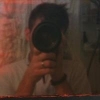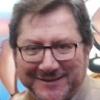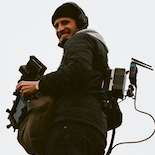-
Posts
3,371 -
Joined
-
Last visited
About Dom Jaeger

Profile Information
-
Occupation
Other
-
Location
Melbourne, Australia
-
Specialties
Cinema camera and lens technician
Contact Methods
-
Website URL
http://cinetinker.blogspot.com.au
Recent Profile Visitors
-

Laowa Proteus: De-tuning lens to add character?
Dom Jaeger replied to omar robles's topic in Lenses & Lens Accessories
$2000 USD to detune a lens? Is that for each lens? I would hope that means they are very responsive to what you want, showing you examples and being willing to tweak it if you're not happy. The thing with detuning is that there are limitless things you can do to introduce aberrations or subtle optical artifacts, so unless you have a fairly specific idea of what you want it could be a bit of a gamble. Since you feel that filters don't give you what you want, I presume you have an idea in mind? Simply asking for "a vintage look" could mean anything from an extreme Petzval with swirly bokeh and edges falling off completely, to a subtle softening of fine detail or a little more bloom to highlights. Do you want your blacks to stay rich or want more of a low con look? Do you want flare characteristics to change, or want to change the look of the out of focus bokeh? Some of these effects are very simple to achieve, try flipping the rear element upside down for instance, and see what happens. It'll be vintage, as in 1860s vintage.. 😉 The best approach is probably to have a particular lens look in mind, like if you really wanted to try and emulate the look of Kowa anamorphics or Panavision C series for instance. It's worth mentioning that every lens will respond differently to what you do to it. If you add a spacer to element 3 on a 50mm Cooke anamorphic it won't do the same thing as adding the same spacer to element 3 of a Laowa 50mm anamorphic. And different focal lengths of the same series will react differently as well. So essentially each lens needs to be individually customised, depending on the optical design and what result you're looking for. When Panavision does lens modification, they have a very controlled set of recipes available in different combinations and strengths, and the DoP is extensively consulted to make sure they are happy with the result. They have a long history of doing it, and know exactly how to make a particular lens look similar to another lens, for instance, or how to introduce very specific effects without changing other qualities. Lots of people have tried to copy Panavision's lead, which is why detuning is now something of a trend, but I'd make sure the company in question knows what they're doing.- 1 reply
-
- 1
-

-
You picked one of the most inventive decade for stylistic experimentation in the history of cinema, so you'll need to be a bit more specific. Barry Salt's ""Film Style and Technology" has a great couple of chapters on the 1920s, I believe you can borrow it from the Internet Archive. Worth a read for some descriptions of the different lighting approaches and technology that were introduced in this period. This site has many images from films of every year, so you can sift through the ones from the 20s to get a sense of the diversity of visual styles: https://film-grab.com/browse-by-category/movies-by-year/
-

Zeiss Ultra Prime vs Super Speed MKIII Lenses
Dom Jaeger replied to a topic in Lenses & Lens Accessories
Or he could have bought these Canon K35s for $14,000, used them for years and then sold them for a $200,000 profit. -

F/S Zeiss 12-120mm T2.4/PL Super 16 Zoom
Dom Jaeger replied to Charles Pickel's topic in Cine Marketplace
Thanks Charles. Yes, I'm a professional lens technician, I remember installing the original Optex conversion kits 20 years ago! That's great you've made a new kit, I often get requests to convert these lenses. I'll definitely be in touch. -

F/S Zeiss 12-120mm T2.4/PL Super 16 Zoom
Dom Jaeger replied to Charles Pickel's topic in Cine Marketplace
Hi Charles, Did I read somewhere that you are selling new conversion kits for these zooms? -
Nice find Gareth! Just regarding running the camera, I would be a little careful running it without any lubrication, it’s likely bone dry after all these years. While it may be ok, it also risks seizing up. More amateur cameras with looser tolerances can often better handle running without lubrication, they just wear, but certain professional cameras with very precise fits can gall and bind, which is more destructive. Mitchell and Panaflex cameras for instance need very regular lubricating or they will seize. Arriflexes, by contrast, were designed to run without regular lubrication, but I think a lot of the older professional grade cameras were more like Mitchell’s and Panaflexes. The movement is an interesting one. As Simon mentioned before it has fixed registration pins like the Bell and Howell 2709, a famous camera from the early days of cinema. The film is lifted off the pins, moved down and seated back on the pins for each frame, making a fairly god-awful clattering sound. Not a good candidate for sound cameras, but very stable. I’m sure Simon could tell us a lot more about it. I’ve played a bit with the older spring-powered Newman Sinclair cameras which use the same movement design, but never seen one of these. Kubrick famously threw a Newman Sinclair camera off a roof six times to get a shot in Clockwork Orange, and found the camera undamaged afterwards: “How did you manage the subjective shot of Alex's suicide attempt? We bought an old Newman Sinclair clockwork mechanism camera (no pun intended) for 40 Pounds. It's a beautiful camera and it's built like a battleship. We made a number of polystyrene boxes which gave about 18 inches of protection around the camera, and cut out a slice for the lens. We then threw the camera off a roof. In order to get it to land lens first, we had to do this six times and the camera survived all six drops. On the final one it landed right on the lens and smashed it but it didn't do a bit of harm to the camera. This, despite the fact that the polystyrene was literally blasted away from it each time by the impact. The next day we shot a steady test on the camera and found there wasn't a thing wrong with it. On this basis, I would say that the Newman Sinclair must be the most indestructible camera ever made.”
-

Arriflex 2B/C 400ft Mag Capacity
Dom Jaeger replied to Christian Flemm's topic in Camera Operating & Gear
I’ve often wondered whether European film companies ever released metric film cans, since the Arri mags were described as 60m/200ft or 150m/500ft. But 500ft is also half a 1000ft mag, so it makes sense from that perspective. It’s curious how the film industry mixes measurements, the consequence I guess of Hollywood’s dominance over what has always been a world-wide industry. We still call it 16 or 35mm film, and outside of a few vintage offerings lens focal lengths are metric, but film comes in imperial lengths and we still call the resulting product footage. Many countries, including us here in Australia (an otherwise metric country) also prefer lens distance scales in feet. I quite like feet for focus distance estimation, but as a technician I despise small measurements in fractions of an inch. -

Help needed - Eclair ACL Losing Loops
Dom Jaeger replied to Aaron Yang's topic in Camera Operating & Gear
Like Kamran said, what probably happened is either the loop shifted when you removed the mag or when you re-engaged the mag the claw missed the first perf and the loop shifted up. Always check the loop is centred or even has a little extra at the bottom before fitting a mag, and manually inch the camera over to engage the claw with the first perf. Listen to the sound as well when running to get used to how it should sound, usually you can hear if there's a problem. So likely just operator error, but if you want to have it checked, I second Visual Products, great techs with lots of experience. -

1.4x expander with s35 anamorphic lenses?
Dom Jaeger replied to Dominik Bauch's topic in Camera Operating & Gear
I don’t know the Atlas expander, but if it’s a low budget item I would expect there to be some optical degradation. Even high-end expander/extenders tend to cause a bit of that, simply by magnifying any faults a lens has, as well as introducing extra aberrations. You’ll need to test yourself to determine if the funk of the full image circle is worse than the expanded image. Other than that, you know the issues - one stop light loss, no lens data. You will also find the lens focus marks will be out by about an inch and a half, which is more of a problem at closer distances. -

Fungus inside my Arriflex 16ST Door Optics
Dom Jaeger replied to Ivan DImitrov Alexandrov's topic in 16mm
There can often be a little fungus in old viewfinder optics. The issue is more that it can spread across the affected optic rather than infect other lenses. Fungus spores are more or less everywhere, they just need the right environment to grow. Ideally, you should get the viewfinder optics cleaned, but as long as you keep the camera well stored, and perhaps air it out in the sun every now and then, it should be ok. Make sure the camera case itself isn’t damp or mouldy. You can use desiccant sachets or similar. Same goes for any lenses you have, avoid storing them in dark, musty, damp or humid environments, and air them out regularly. UV light tends to kill or at least retard fungal growth. I wouldn’t worry about lenses getting infected just by mounting them to the camera. -

The Dynamics of a Working Camera Department
Dom Jaeger replied to Gregory Irwin's topic in General Discussion
Well that's a gap in your resume you'll have to fill! -

The Dynamics of a Working Camera Department
Dom Jaeger replied to Gregory Irwin's topic in General Discussion
Have you ever worked on a movie in Australia, Greg? -

Bolex B8 - can anyone tell me what is causing this issue?
Dom Jaeger replied to Johnny Liu's topic in Bolex
That doesn’t sound right, the 4 front plate screws should all screw down tight. It is weird if all are stripped, yes. Unless someone put in the wrong screws? Imperial instead of metric or something. I wrote this a while back, all pocket camera are basically similar, if you ever want to go inside: http://cinetinker.blogspot.com/2013/01/servicing-bolex-d8l.html -

The Dynamics of a Working Camera Department
Dom Jaeger replied to Gregory Irwin's topic in General Discussion
Great stuff Greg! Thanks for sharing. -

Bolex B8 - can anyone tell me what is causing this issue?
Dom Jaeger replied to Johnny Liu's topic in Bolex
Well, the leak is across the film width. So look for any gaps in the film chamber going in that direction, perhaps the footage counter cover at the back? The frequency is probably related to how long your shots are, since the light must be leaking between shots. My guess would be the footage counter, so as an experiment try taping over the edges of the cover inside and see if the leak continues. If it is in-camera, you should be getting brighter flashes when shooting outside in bright sunlight, and depending on how long you pause between shots.








